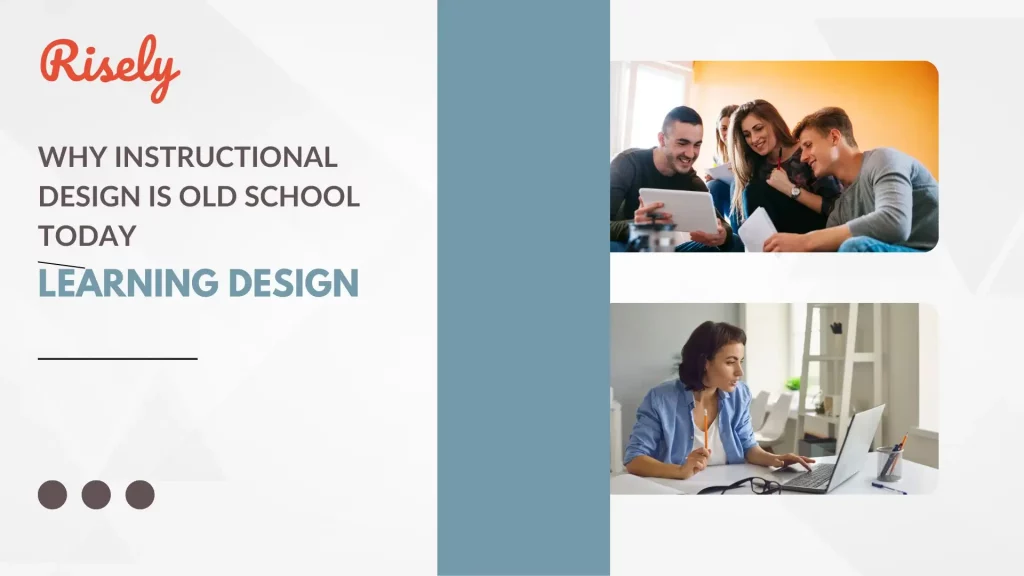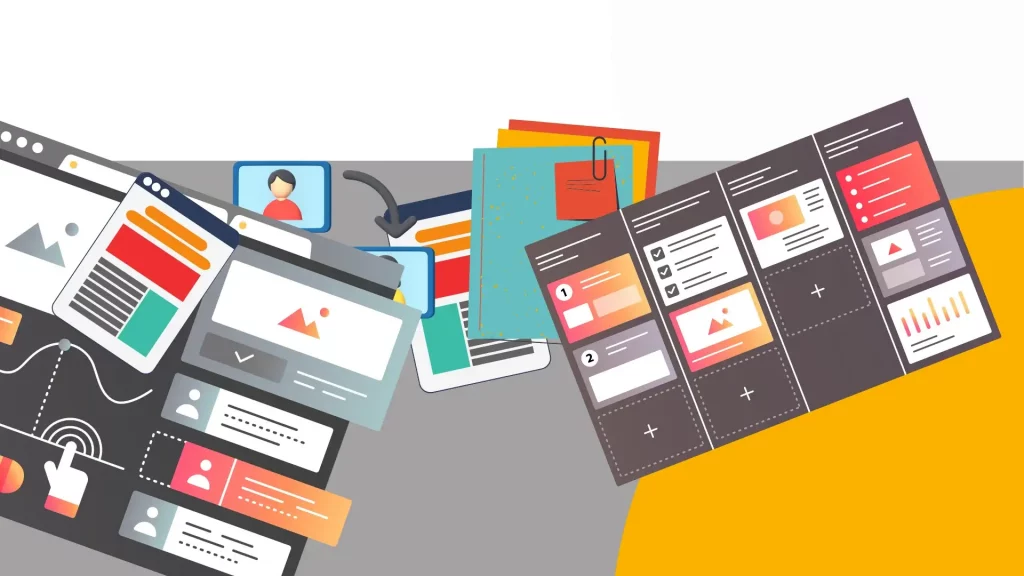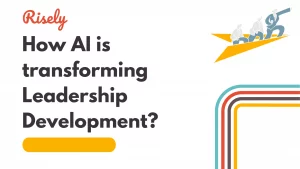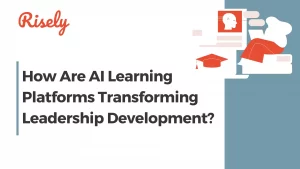Learning Design: Why Instructional Design is Old School Today
Designing learning and development initiatives to be great is not as simple as it seems! Learning and development strategies involve multiple steps, including setting learning goals, designing the content in various formats, delivery and distribution, and so on. Learning design, or instructional design, is concerned with the making of the training and development material that you will ultimately use. In this blog, we will learn all about how these designs work, where they can help you ace your L&D goals, and what key ideas are central to making effective learning designs for your team.What is learning design?
Learning design is defined as a framework that supports learning experiences. What does that mean?Learning design is the systematic approach to planning, creating, and delivering learning experiences that cater to specific learning and development goals. It includes the use of many learning theories and models and aims to deliver effective learning.
Effective learning design is more than just sharing information. It is about making learning experiences that help people gain, remember, and use new knowledge and skills. This approach is learner-centered. It looks at what the learners need and want to help them grow and develop.What is the learning design process?
The design process in learning design includes several important steps. These steps are analysis, design, development, implementation, and evaluation. Each step is vital to create effective learning experiences.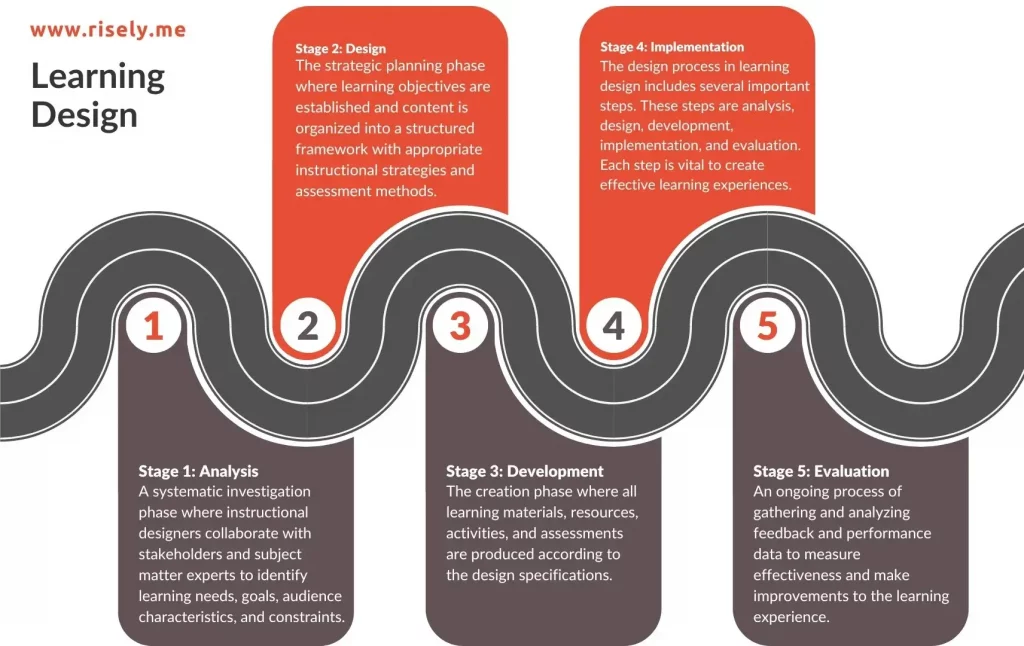
- In the analysis phase, instructional designers work with experts and stakeholders. They figure out the learning goals and see what learning opportunities are needed.
- The design phase is about organizing the content, choosing teaching methods, and making engaging activities for the learners.
- Development is when instructional materials and resources are made.
- The implementation stage is where the learning experience is delivered.
Evolution of the learning design landscape
Because of its interdisciplinary nature, learning design is impacted by many areas. In its earlier avatar, it was known as instructional design, but the modern world has called for a more holistic approach and a new name for this facet of corporate learning and development. In the very early days, learning design was informed by psychology theories, including behaviorism, which focused on stimulus and response relationships, and cognitivism, which shed light on the mental processes underlying how we learn. In the later years, new developments in the fields of linguistics and neuroscience have added more insights. Technological advancements have added their share of impact by forcing some of these changes. Back then, corporate learning was restricted to classrooms and seminar halls, so at best, you only designed instructional material. The later focus on using video as an effective learning medium and the current wave of AI has forced L&D teams to rethink the entire paradigm and tilt in favour of ideas that keep the learner at the center. As a result, there is a higher emphasis on engagement with the end-users (the employees in our case), focus on their unique needs and preferences, and personalization in learning design.How does learning design differ from instructional design?
Learning design and instructional design are closely related but have distinct differences. While instructional design focuses on creating effective learning materials and strategies, learning design goes a step further by emphasizing a more learner-centered approach. Instructional design primarily deals with the development of training materials and methods to facilitate learning. It is more about the technical aspects of delivering information effectively. On the other hand, learning design takes into consideration the specific needs, preferences, and motivations of learners. It aims to create experiences that not only transfer knowledge but also engage, inspire, and empower learners to apply what they learn in real-life situations.Why learning design matters to L&D?
Why can’t we just stick to instructional design? There’s not a lot of change after all. Except, there are very important reasons why your success as an L&D professional depends on how you use and understand learning designs. Let’s understand them in some detail below:#1 Learning design is critical in L&D success
You have a great learning and development strategy. Your content was built by in-house subject matter experts and is ready to be sent to everyone across the team. But there’s one issue: the learning content is a document lasting 100+ pages. We both know that no one is reading it. Learning design practices can save you from blunders like this by informing you what learning methods and mediums of delivery would be well received by the end-users in your organization. It ensures you match the objectives and helps you create memorable learning experiences. These further help reduce inefficiency and improve knowledge retention and practical application.#2 Adult learning principles
The learning design approach is informed by many learning theories and models in the context of adult learners in workplaces. It uses frameworks such as Bloom’s Taxonomy, Gage’s Nine Levels of Learning, ADDIE, and GROW coaching models to inform actions in the L&D function. It ensures that employee training methods have a theoretical basis and evidence backing their efficacy. As a result, we can maintain higher levels of motivation and engagement. Learning design helps boost engagement. It changes old, boring ways of learning into fun, interactive experiences. By using gamification, storytelling, and real-world simulations, learning designers can spark interest, encourage active involvement, and make learning more enjoyable.#3 Content development
Learning design processes structure the entire content development, creation, and delivery timeline into a systematic flow of events. As a result, you create digestible chunks of learning arranged in a logical sequence, which helps balance theory and application-based learning. Along with the content, you can create assessments and other activities in the learning and development process to build milestones and monitor progress as you go. Ultimately, the clear learning paths you get are helpful for the employees navigating the learning material and also simplify the process of calculating the impact and ROI of learning.#4 Technology integration
Most teams are looking forward to using tech to reach more learners and create more impact. But the question is, how do they do it best? Learning designs help you in this journey by enabling a mix of appropriate delivery methods (e.g., eLearning, blended, instructor-led) to balance in-person learning with digitally delivered one. As a result, you can utilize learning technologies instead of merely getting lost in the huge jungle of emerging tech. When you approach learning and development with design thinking, you can also cater to the unique needs of your employees working in distributed teams across the globe, such as the language options we have on Merlin. Risely’s AI coach can talk to people managers in over 40 languages! Similarly, a design process enables you to create many more ways to build inclusivity and accessibility within your learning experiences.#5 Communicate value to stakeholders easily
As we noted earlier, due to the precise targeting of specific strategic learning objectives and high clarity, learning designs are a great tool to calculate ROI and demonstrate the impact of your L&D operations. A well-curated learning design will help you showcase a variety of programs focused on specific goals, the depth of your learning interventions, personalization and employee satisfaction that you created, and, ultimately, the performance improvements you enabled. When we are talking about stakeholders, the C-suite is just one side of the equation. The employees who are the end-users of your L&D programs are much more directly impacted by learning designs. Ensuring that their needs are met and preferences are kept in mind will help you get more satisfied learners. When this ties in with personal development goals and internal mobility, you end up happy employees who believe that learning is their super power. Read more: How to Obtain Buy-In for Training from Stakeholders?#6 Meet the learners where they are
Employees are an important cog in the L&D machine. A good learning design will keep them at the center of everything and focus on meeting their needs regarding what they want to learn, how they want to learn, and when they want to learn. For instance, most manager development programs take people out for two or three days and place them in a seminar hall with an expert offering tips and tricks. It’s great, but what if they have a challenge they cannot discuss in front of a crowd? It happens more often than not; we have all been there, hesitating and keeping challenges to ourselves. In such spots, you need an AI coach like Merlin, who will surely not share the concern with anyone ever and will answer as many questions as the manager needs. Keeping such things in mind ensures that your design does not burden the learners but gives them a safe space to correct themselves and develop better versions. As a result, you will also witness a higher level of learning transfer and application in the workplace.What are the pillars of effective learning design?
Now that we know why learning designs matter let’s focus on the key question: What makes some learning designs good?#1 Strategic alignment
Impactful learning designs are strategically aligned. It means that there is a clear connection to business/organizational goals. For example, suppose the organizational goal is to increase sales over the next quarter. In that case, your learning design will incorporate an online course to give product knowledge to everyone and mentoring sessions to enhance negotiation skills. Thus, it is mixing up two methods to cover two different areas as needed for the broader goals. Similarly, the learning process has goals and milestones to help track progress. Such learning designs are relevant to the organization and employee as they focus on addressing performance gaps critical to their success.#2 Learner centricity
The learner is the pivot for any effective design. Learner centricity means that their needs and preferences are considered during the development of the learning plan at every moment. These choices are not made by someone else and imposed on them. Learner centricity is critical in getting engagement for your programs. It further secures buy-in, enhances learning transfer, and raises the satisfaction levels of the employees. It could include designing learner personas to understand the people you have, creating learning content at the right difficulty level, focusing on inclusion, and remaining sensitive.#3 Engagement factors
We don’t want the learners to be bored, do we? Otherwise, they will just drop out of the program. If the learning program is mandatory, they will sit through it, find it annoying, and never apply anything to their daily work. That’s why you need engagement factors and consciously design for them. Overall, the program should provide a challenge that they can tackle but one that forces them to think. It is similar to how SMART goals are set – they are achievable but need effort. Beyond that, think of interactive and participatory elements that bring real-world applications and examples. You can also use story-driven or scenario-based learning to create the right balance of content and activity.#4 Effective structure
Good learning design follows an effective structure in delivering the learning content. It has a logical content progression and chunked information for better retention. For example, if we are talking of project management principles, it should ideally look like this:| Module 1: Project Basics (Foundational Concepts) Chunk 1: What is a Project? (15 min) Definition and characteristics Types of projects Quick knowledge check Chunk 2: Project Life Cycle (20 min) Initiation to closure Key milestones Practice Activity: Identify phases |
| Module 2: Planning Essentials (Building on Basics) Chunk 1: Scope Definition (20 min) Requirements gathering Deliverables identification Mini-case study exercise Chunk 2: Timeline Creation (25 min) Task breakdown Duration estimation Hands-on: Create a simple timeline |
| Module 3: Execution Skills (Application) Chunk 1: Team Management (20 min) Roles and responsibilities Communication plans Role-play exercise Chunk 2: Risk Management (25 min) Risk identification Mitigation strategies Scenario-based practice |
#5 Learning transfer
Did you notice how the plan above had some practice elements? The 2nd chunk of the 2nd module asks the learners to create a timeline just like they would do in real life while handling projects. Such actions break the friction that learners experience while applying new things at their jobs, But hesitation is one aspect, there are many more sources of concern. A good learning design breaks them down by creating opportunities for learning transfer. It can include follow-up mentorship sessions or activities, peer groups to continuously engage on the topic, or reinforcement strategies like the nudges Risely uses for people managers.#6 Evaluation framework
Ultimately, we need results. And for that, we need to measure things. As we started, there has to be a clear focus on learning goals derived from business goals. Further, along with goals, you must define success metrics and create regular assessment points. For instance, in the example above, some chunks of learning ended with a quick quiz to reinforce and track learning until that point. The data you collect this way is quite helpful in two key areas:- First, it will help you present the program’s ROI to the concerned stakeholders. Based on this, you can enable more data-driven decisions and seek higher budgets and bigger roles in the organization.
- Second, the data regarding the evaluation of learning programs helps improve the program itself. Multiple feedback points such as employee surveys, satisfaction scores, and beyond-the-performance scores help you shape more effective learning designs.
#7 Support systems
Last but not the least. People can be your biggest enablers but also your biggest source of trouble. Leadership development programs worldwide have faced challenges because the senior leadership is not role modelling the values they call these programs to propagate. Similarly, if the employees don’t see value in your programs, there’s bound to be trouble. The key is to anticipate and beat these challenges by design. One of the foremost things is to provide adequate learner support. That’s where a lot of plans fail. Because the content might be great but there’s no one to answer a question. Some organizations building leadership development programs have been stuck there too, and now they have incorporated Merlin in their L&D plans to provide support when humans cannot. That’s just one angle. There’s more to creating a support system for learning at work including solid peer networks that motivate progress, managers who support training and application, and creating resources to be used once the training is over – because learning does not end the moment training does. Janis Cooper shed more light on this topic in a podcast with Risely about building great learning experiences at workplaces:Wrapping up
Learning designs are very important for how employees perform and how successful a company can be. When companies connect learning goals to their business needs, use engaging activities, and take advantage of technology, they can boost how involved and motivated employees feel. To make learning better, it is key to check how well these designs work by using clear measurements. Keep up with the best ways to learn and assess how good your learning plans are to help keep and grow your staff.Deeksha, with a solid educational background in human resources, bridges the gap between your goals and you with valuable insights and strategies within leadership development. Her unique perspectives, powered by voracious reading, lead to thoughtful pieces that tie conventional know-how and innovative approaches together to enable success for management professionals.
Get Started with the Free Training and Development Plan Template!
Grab free L&D resources and more for holistic growth of people managers.
Only on Risely.

